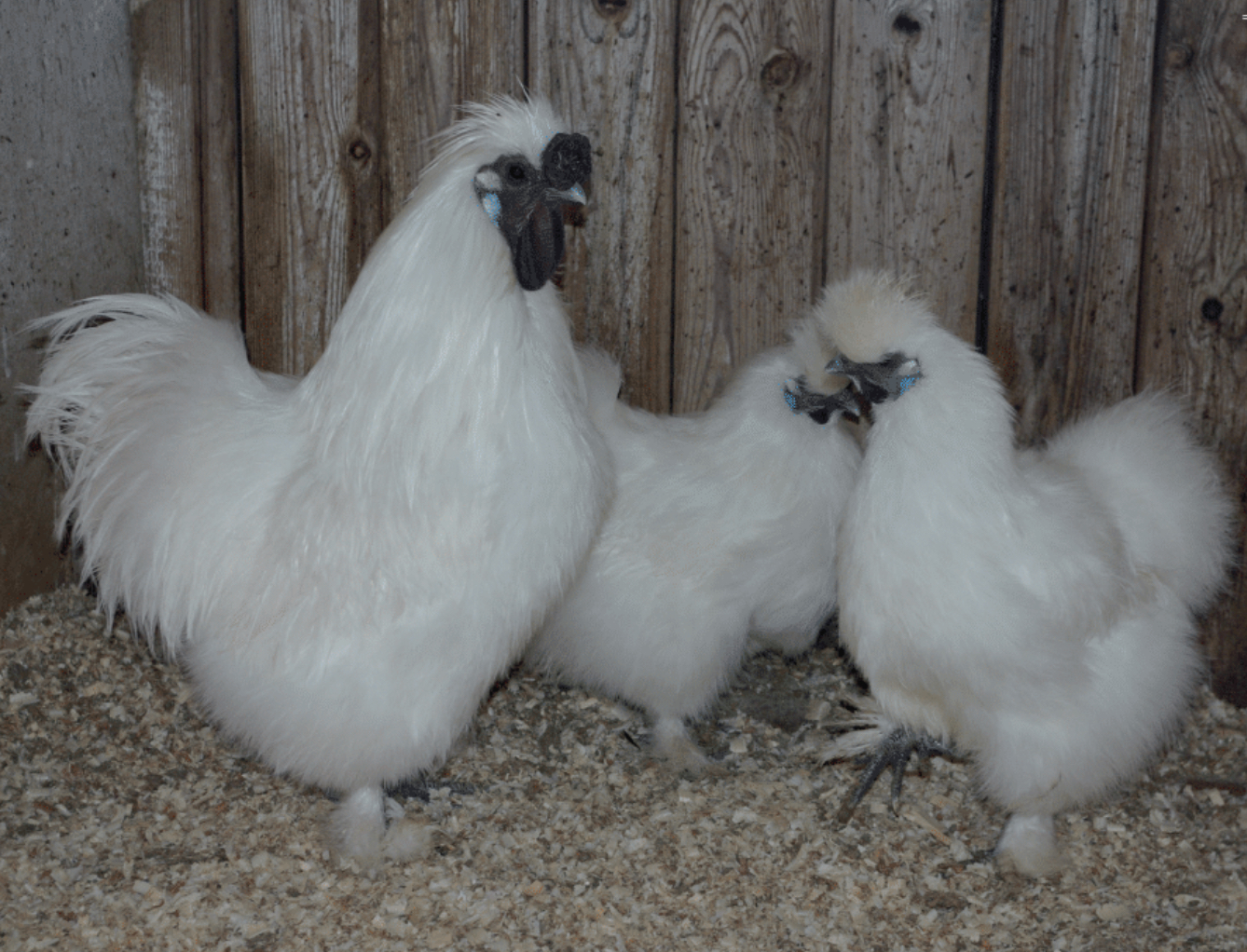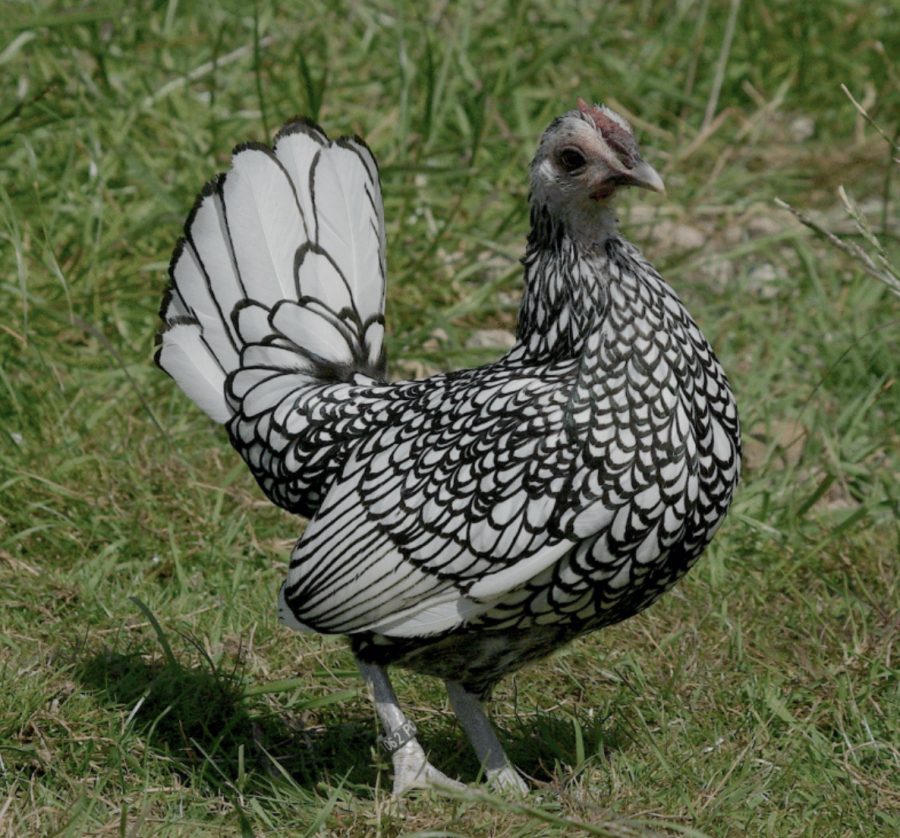Grant Brereton takes a closer look at small chickens and explores the definition of a ‘true’ bantam as opposed to a ‘miniature’ chicken.
The first time I heard the word ‘bantam’ was when my mum used to talk of keeping chickens in the garden when she was a child. They were no doubt crossbred little fowl of varying ancestry. In those days, the average poultry keeper would regard all small chickens as bantams. This still goes on today, and really is only wrong if we’re getting technical. No doubt many out there would argue the case that all small chickens are actually bantams, but let me explain where the differences lie…
Almost all poultry breeds, particularly the dual-purpose ones, began as what we now refer to as ‘large fowl’ – to delineate the difference between the two available sizes in many breeds, where there is a small and large version. Really, you have the original standard-sized breed and then the miniature version of that breed (what people refer to as bantam). Example: the two available options of the following breed are New Hampshire Red and New Hampshire Red miniatures. The miniatures are supposed to be a certain percentage of their parent breed in body size, and be representative of that breed in every aspect. So, if the parent breed is a good layer, the miniature version should also be a good layer and so on. But the word ‘bantam’ has a nice ring to it, and for many people is preferable to ‘miniature.’ And although the assumption should be that unless you specify that the breed you keep is miniature, then it is the large (original) counterpart. It all gets a bit silly really, and people will always refer to standard-sized breeds as large fowl and miniatures as bantams. It’s been that way for a long time and keeps things simple; I can’t see it changing any time soon!
TRUE BANTAMS
What is a ‘true’ bantam then? you may ask. A true bantam is simply a pure breed that was created originally as a bantam with no large fowl counterpart. Breeds that are ‘trues’ include: Belgian, Booted, Serama, Dutch, Japanese, Nankin, Pekin, Rosecomb, Sebright, and Tuzo. Although most true bantams have their own breed clubs, they have a special place on championship row at shows, so the next step for a best of breed such as Dutch or Pekin, for example, is the award for ‘best true bantam,’ which will automatically be in contention for show champion. Many breeders and fanciers these days find it easier to keep bantams than large fowl. Logistics-wise, they don’t take up as much space or need as much feed, so are a good option for those whose resources are limited in both respects. I am one such example, where even though I technically keep ‘miniature’ Partridge Wyandottes, they work out much better than going back to the old days of large fowl. Unfortunately, I just don’t have the facilities to do large chickens justice.

White Silkie bantams
Interestingly, the assumption might be that neighbours would tolerate bantam cockerels more than large fowl – that often have low and bassy tones when they crow. But this isn’t always the case. True bantams can have high-pitched and quite piercing crows, so keeping true bantams for breeding doesn’t necessarily guarantee no neighbourly noise complaints. True bantam breeders sometimes get frustrated when newcomers discover their breed. A great case in point is the Sebright bantam that – with its striking laced plumage and diminutive size – really jumps out at you when looking through books of all the different available pure breeds.
People, myself included, find it difficult to believe that they are actually chickens at first. But their very existence doesn’t do any harm to the endearment of pure breeds and poultry keeping.
Together with their sprightly gait and charming personalities, Sebrights are an attractive option for many people. They think, ‘Oh we’ll just get a little coop and buy ourselves a trio of those – the kids will love them!’ So the birds are sought and life is wonderful for a bit. They are easy to keep, cheap and bring lots of joy to the whole family. Sadly, for many people, they just don’t have the sway to be keepers. And this is after breeding a few and becoming really engrossed in them for a while. This curse, and whether you admit it or not, is called ‘the novelty factor’ and is what breeders hate. They sell good stock in the hope that newcomers will slowly become long-term devotees of the breed, but a year or so down the line and they no longer keep them. Of course, everyone can do what they like, but serious breeders of Sebrights (and many other pure breeds), accept that, unfortunately, their variety is just a passing phase for many people ‘having a go’ at pure breeds.
MINIATURE DISAGREEMENT
The very notion that something is a miniature version of something else suggests that there must be a marker by which it is measured. It won’t surprise you to learn that many people disagree on the proportionality of miniatures to be regarded as such. I was always told that a miniature should be one-fifth the size of its standard equivalent, but think about it for awhile and you realise that that means very small miniatures indeed. Debates have occurred continuously on this subject, with many people now agreeing that a miniature is a sensible one-third the size of its large fowl parent breed. Despite what is written down officially, there is no way, apart from opinion, on determining whether a miniature is over- or under-sized. People arguing to the contrary often cite the required weights of miniature fowl as the answer, but as we all know, size and weight aren’t always congruent.
Another point often debated is whether Pekins are actually just Cochin bantams, which exist on the Continent and in other parts of the world. They are very similar and you can see why such a conclusion is drawn, but the Pekin is a true bantam because of its really short legs and forward tilt (where the head sits lower than the tail) among other things, that set it apart from the Cochin bantam.
The Silkie bantam didn’t have an easy ride into the world of exhibition poultry. Considered by many as an ‘in between breed’ in terms of size, there wasn’t really a place for the Silkie bantam (officially miniature). But, as the large fowl grew ‘larger’ over the years, an opening occurred. This is still a cause of great disagreement with some keepers of Silkies.
The bantams only really began to emerge in the early 2000s, where previous examples were just ‘small specimens’ that were still oversized to be considered miniatures (comparatively).
Now, there are many colour options in miniature Silkies, both bearded and non-bearded. Many breeders consider that miniature pure breeds should pay homage to their larger original versions and do them proud. The expression ‘little bigguns’ exists in the Sussex breed, perhaps quite obviously to describe exactly how miniature Sussex fowl should be. A miniature can’t just bear a resemblance to the original; it can’t be a weedy little bantam with the same features and plumage as the large fowl. If it’s supposed to be a heavy breed, then it should be a heavy miniature also. So what will you fancy keeping – miniatures or the true bantams?
This article originally appeared in the August 2023 issue of The Country Smallholder magazine. To receive regular copies of The Country Smallholder magazine featuring more articles like this, subscribe here.
For FREE updates from the world of smallholding, sign up for The Country Smallholder newsletter here.








